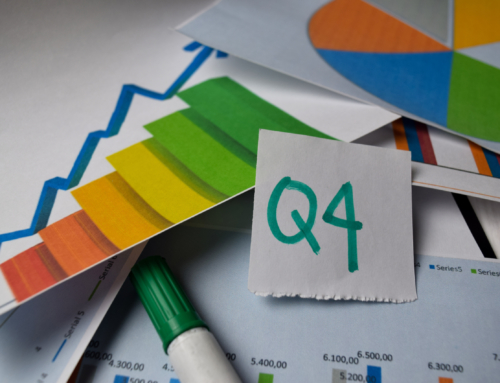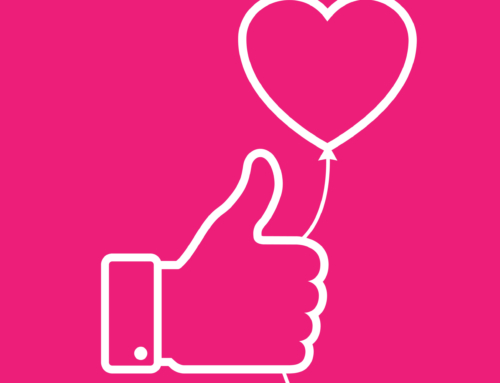As if there wasn’t already enough things for small business owners to worry about on Facebook, they now have to consider various reactions to their content. Facebook recently rolled out their “reactions” option, which allows Facebook users to quickly select one of six emotional reactions to represent their feelings towards content. Whereas users previously could only “Like” content, they can now respond with a “Like,” “Love,” “Haha,” “Wow,” “Sad,” or “Angry” reaction.
This may seem like a small, unimportant adjustment to the social media behemoth, but it already has an abundance of value to marketers, like myself.
Long have Facebook users demanded a “Dislike” button to compliment the “Like” button. Users often argued that it doesn’t seem appropriate to “Like” certain posts on the platform. For example, if a friend made a status update about how they were injured because of a reckless driver, it would feel a little awkward if you “Liked” it.
Facebook’s reactions kind of meet those demands somewhere in the middle. There is still no “Dislike” option, but “Angry” or “Sad” reactions might be enough to satisfy that sort of response.
Now, for marketers, these various emotional responses can be useful in a couple of ways; (1) they will give us a more clear idea of what our Facebook users think of our content, and (2) they will help us strategize a better content plan moving forward.
What do Facebook users think of our content?
Prior to reactions, if someone didn’t like your content, they would just keep scrolling down their newsfeed. Now, they have the ability to laugh (using “Haha” to laugh with or at content), demonstrate sadness, and show anger. Though, users can, and often do, leave comments to show their displeasure in content, mobile users often choose not to say anything at all and prefer the quick engagement.
This essentially means that mobile users, who normally prefer not to comment while on their phone, can get their point across quickly with a reaction.
So, if a dentist decides to post a humorous meme that she thinks is hilarious (but in reality is very offensive), she might see a ton of “Angry” reactions begin popping up. If that isn’t enough for someone to realize they should take the post down, I don’t know what is.
Like the dentist, us marketers will be able to better gauge the thoughts towards our content. If I shared the same offensive meme as that dentist and it received a ton of “Angry” or “Sad” reactions, I would know to delete that post, and incinerate anything like it that may be scheduled.
It’s also nice to know that people enjoy our content.
If I share an infographic about positive trends in the housing market for a real estate agent and I see a bunch of “Wows,” “Loves,” and “Likes,” I will know I got the point across and that their fans enjoyed the content.
Once we get a clear picture of what our users might think of our content, we can strategize a stronger game plan moving forward.
Making better future content
The internet is a very emotional place. People either love everything or they hate everything, and their emotions often play a role in what content they like to engage with. With that being said, it isn’t always our goal to post content that will be loved.
Jonah Berger and Katherine Milkman found in their 2011 study (What Makes Online Content Viral) that content that elicits an angry reaction is 34% more likely to appear on the New York Times “Most Shared page.” Additionally, it was found that content that made people anxious was 21% more likely to appear on the “Most Shared” page.
Knowing that negative content can be effective, and having the reaction insights at our disposal, we get a better understanding of what our audience wants to see.
Sharing some tips on an exterminator’s page about easy ways to eliminate mosquitoes from one’s property is something that people might “Like” or “Love.” They will appreciate the tips and react based on appreciation for the tip or because of their excitement to get rid of the bloodsuckers.
In comparison, I would expect to see “Angry” and “Sad” reactions if I posted an article about how the Zika virus (which is carried by mosquitoes) will rapidly spread because of a town’s unresolved standing water issue.
If my Zika virus-type content received much more “Angry” and “Sad” reactions than my educational content received “Likes” and “Loves,” I might see more value in posting content that elicited those types of negative reactions. They aren’t reacting negatively towards myself or the business, but rather the story.
In the example below, you can see many negative (“Angry” and “Sad”) reactions to a story posted by the Washington Post.
The negativity, again, is being directed at the story and not the Washington Post. This is good because it counts the same as a traditional “Like,” and allows it to become exposed to the friends of those who reacted to it, increasing it’s reach.
All in all, the reactions are going to be a welcomed addition to the Facebook experience and present many useful possibilities for marketers. If you own a business, but can’t keep up on all of the work that goes into managing a social media account, call a company like NEXT! Ad Agency. Their social media services will help your business take advantage of the enormous audiences out there, with minimal effort on your end.








